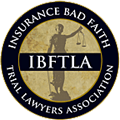How to Tell the Difference Between Abuse and Accidental Injury in a Nursing Home Abuse Claim
Distinguishing between abuse and accidental injury in nursing homes is a critical aspect of protecting your elderly loved one and ensuring he or she receives quality care. When injuries occur in a nursing home setting, it can be challenging to discern whether they are the result of abuse, neglect, or genuine accidents. This complexity is compounded by the vulnerability of nursing home residents, many of whom may struggle with communication due to cognitive impairments or health issues.
The nature and severity of injuries as well as other behavioral indicators can help discern whether your family member is a victim of nursing home abuse or an accidental injury.
Contents
The Differences Between Abuse and Accidental Injury in a Nursing Home Abuse Claim
When addressing injuries in nursing homes, distinguishing between those caused by abuse and those resulting from accidental incidents is essential for nursing home abuse claims and ensuring resident safety. The following are some critical differences to consider:
Patterns of Injury
Abuse often manifests in patterns that can be identified over time. Recurrent injuries, such as bruises, fractures, or marks in similar or specific locations on the body, may suggest intentional harm rather than accidental causes. In contrast, accidental injuries typically appear more random and do not follow a predictable pattern.
Nature and Severity of Injuries
The nature of the injury can also provide clues. Injuries resulting from abuse might be more severe or less likely to align with the explanation given by the caregiver. For instance, severe bruising or fractures from supposedly minor falls may raise suspicions. Accidental injuries usually have a plausible explanation consistent with the resident’s physical and medical condition.
Behavioral Indicators
Victims of abuse may exhibit behavioral changes that can serve as important indicators. These might include sudden fearfulness, anxiety, withdrawal, or reluctance to interact with specific staff members or residents. In contrast, accidental injuries do not typically cause changes in behavior unless they result in significant pain or trauma.
Consistency in Staff Reports
In cases of abuse, accounts of how injuries occurred may vary significantly between different staff members or conflict with physical evidence. Conversely, with accidental injuries, the staff’s reports generally align with each other and the visible injuries.
Timing and Reporting of Injuries
How and when injuries are reported can also be telling. Delays in reporting injuries or explanations that emerge only after questioning might suggest an attempt to conceal abuse or neglect. Accidental injuries are typically reported promptly and followed by immediate medical attention, reflecting a natural response to unforeseen incidents.
Witness Statements and Surveillance
Witness accounts and surveillance footage can distinguish between abuse and accidents. Such evidence might capture the incident itself or interactions between the resident and others before or after the event, providing context for the nature of the injury.
Medical Expert Evaluation
A medical examination provides invaluable insights into the likely causes of injuries. Medical experts can assess whether the type, location, and severity of the injuries are consistent with the reported cause. Such evaluations are essential in abuse claims, as they can scientifically validate or refute allegations based on physical evidence.
Types of Damages You May Recover in a Nursing Home Abuse Claim
When pursuing a nursing home abuse claim, understanding the types of damages available helps victims and their families seek appropriate compensation for the harm suffered. The goal is not only to address the financial burden of such incidents but also to compensate for the emotional and physical toll they take on victims.
The following is a breakdown of the potential damages that may be available in a nursing home abuse claim:
Medical Expenses
Often, the most immediate and quantifiable medical expense damages may cover past, present, and future medical bills related to the abuse, including hospital stays, medications, physical therapy, and any specialized medical care required due to the injury.
Pain and Suffering
This category compensates the victim for the physical pain and emotional distress experienced due to the abuse. Pain and suffering are subjective and differ significantly from case to case, often depending on the severity and lasting impact of the abuse.
Emotional Distress
Separate from pain and suffering, emotional distress covers the psychological impact of abuse, such as anxiety, depression, and post-traumatic stress. This type of damage recognizes the severe emotional fallout that abuse can cause, particularly in the vulnerable elderly population.
Loss of Quality of Life
Abuse can lead to a significant deterioration in a resident’s quality of life, including loss of independence, decreased enjoyment of life, and inability to participate in activities they once enjoyed. Compensation for loss of quality of life addresses these intangible yet profound impacts.
Each nursing home abuse case is unique, and the types of damages awarded will depend on the specifics of each case, including the severity of the abuse and the impact on the victim. Seek legal guidance from the nursing home abuse lawyers at Eric Ratinoff Law Corp. We can help accurately assess the situation and aggressively advocate on behalf of your loved one.
Nursing Home Abuse Lawyers of Eric Ratinoff Law Corp.
If you suspect that the injuries your loved on has suffered are from nursing home abuse, you may have legal options for seeking justice and compensation. Our lawyers have experience handling complex nursing home abuse cases. We can evaluate your case, guide you through the legal process, ensure all relevant evidence is gathered, and fight to obtain the compensation your family member deserves.

















